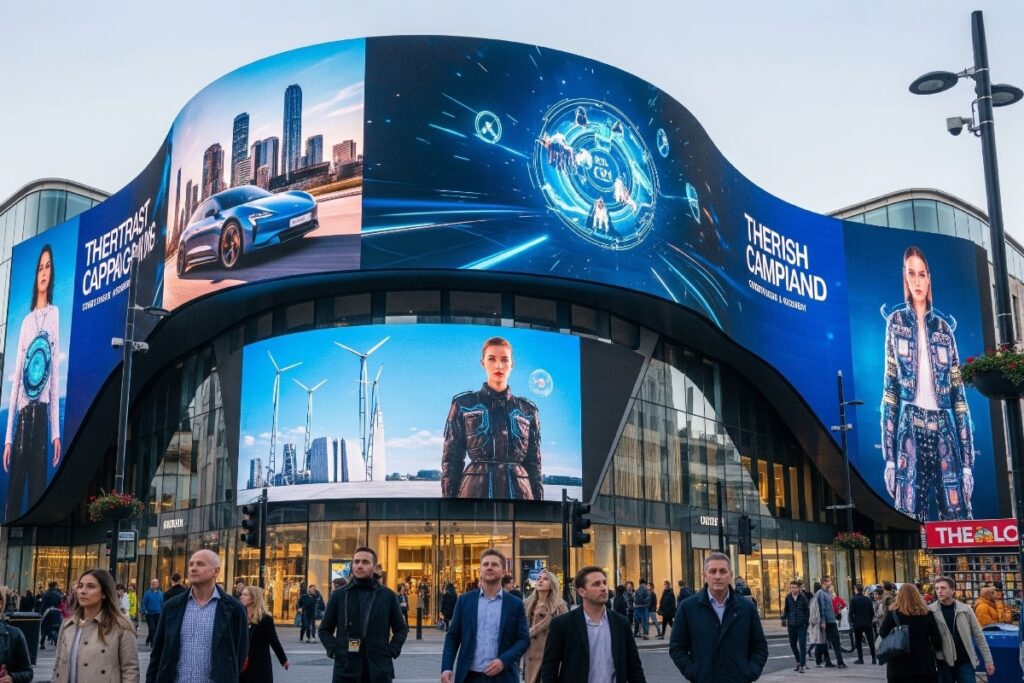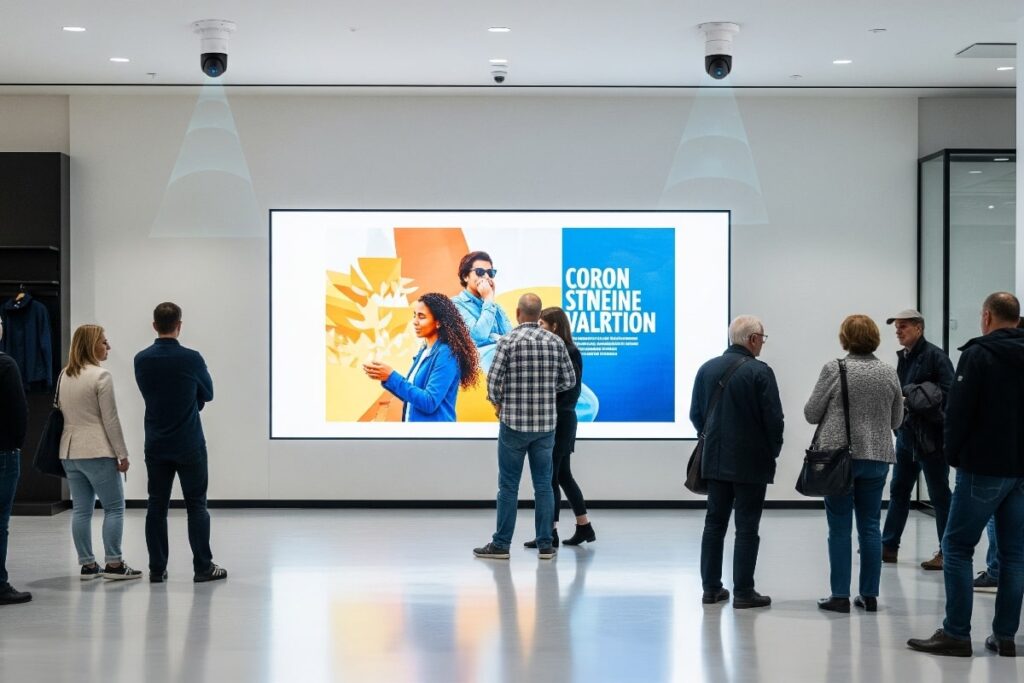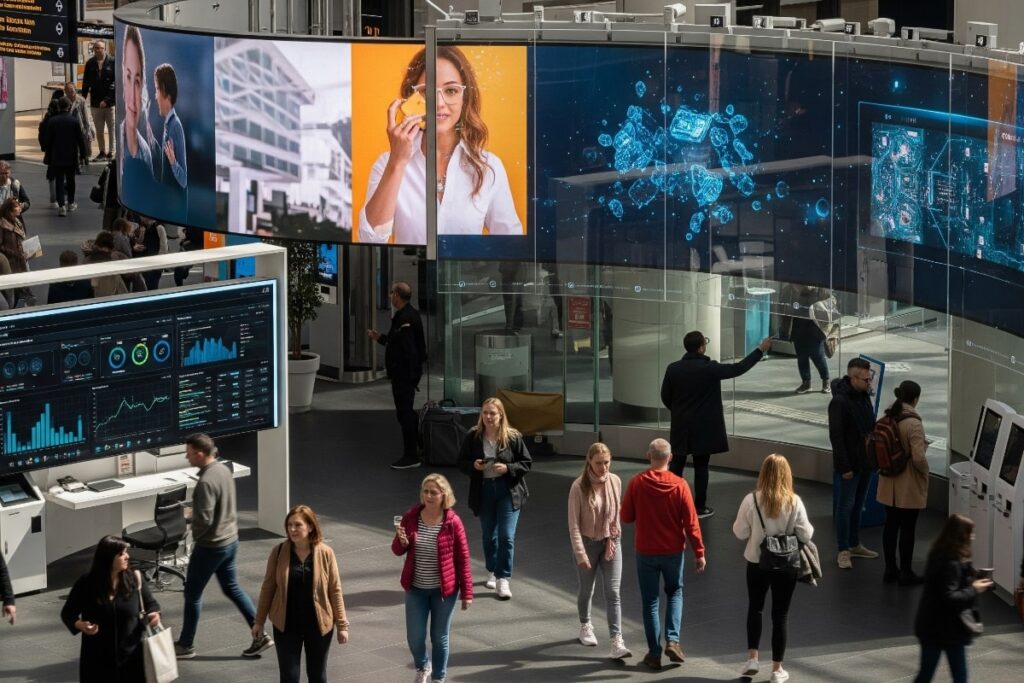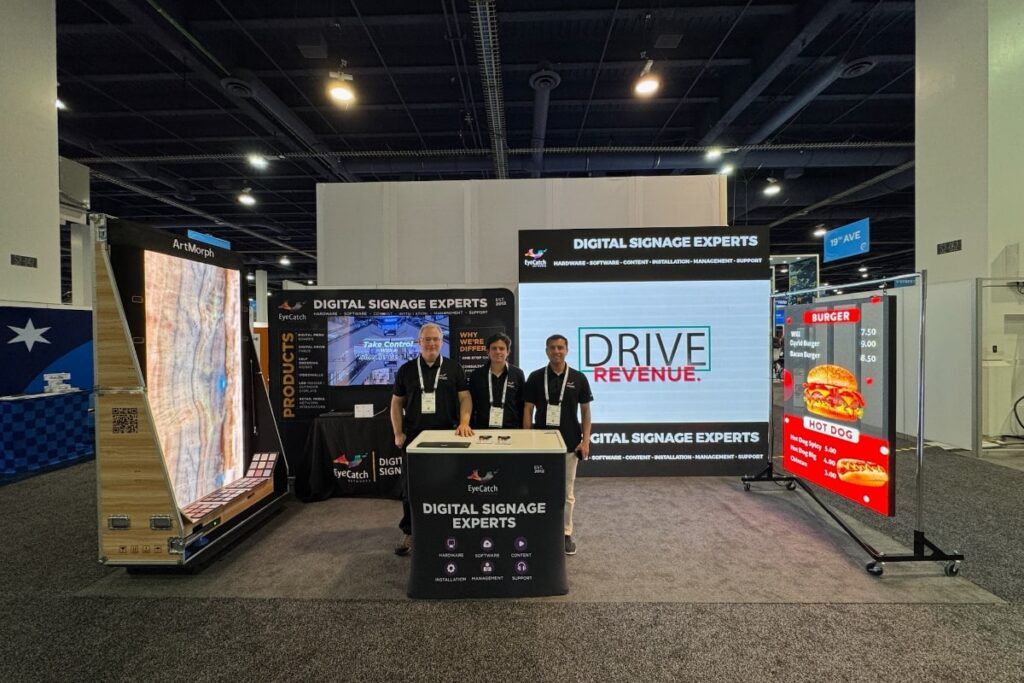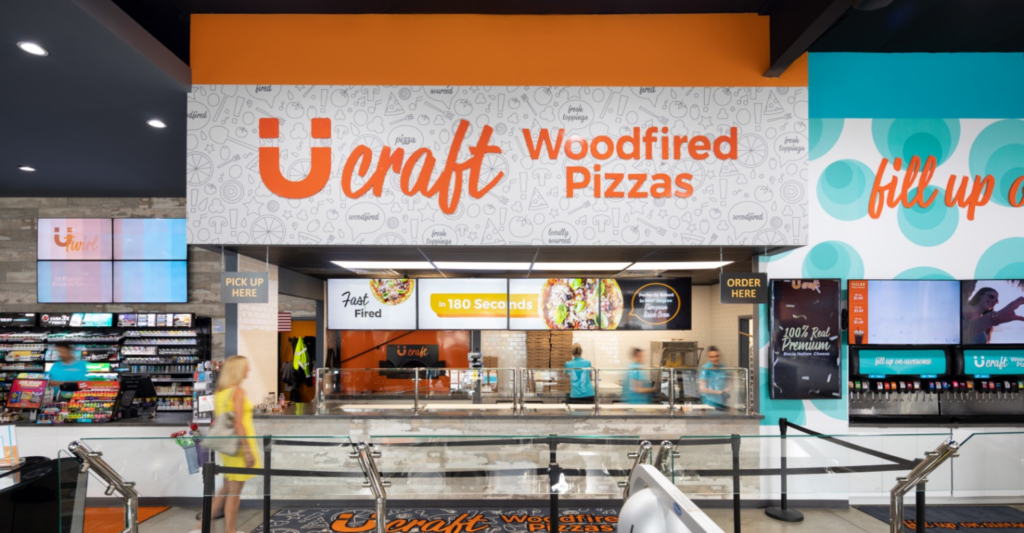In the world of digital signage, audience measurement has evolved from a generic approach to a precision tool. Thanks to technologies like smart cameras and advanced software, it’s now possible to gather real-time data about the viewers of digital screens.
What Is Digital Signage Audience Measurement?
Digital signage audience measurement is the process of tracking and analyzing how viewers interact with on-screen content across your network of digital displays. Using sensors, cameras, or software analytics, it collects data such as foot traffic, dwell time, demographic insights, and engagement rates.
This information reveals who is watching, when, and for how long, allowing businesses to understand real audience behavior rather than relying on guesswork. By translating these observations into actionable metrics, brands can refine content, schedule messages for peak impact, and ultimately improve return on investment (ROI). In short, audience measurement for digital signage transforms a simple display into a smart marketing tool that continuously learns from—and adapts to—its viewers.

What Metrics Can We Analyze?
Audience measurement systems can analyze and provide key information such as:
Viewer profile:
Captures demographic details such as age, gender, and interests to reveal exactly who is engaging with your screens. By understanding audience composition, you can tailor creative assets and scheduling to the most relevant groups, ensuring that every message resonates with the right people at the right time
Interaction time:
Measures how long a viewer remains focused on your content. A longer dwell time signals strong engagement, while shorter periods may indicate that messaging needs refinement. Tracking this metric helps you identify which visuals or calls-to-action hold attention and which ones require adjustment to maintain interest
Mood detection:
Uses facial-expression analysis to infer emotional states—interest, surprise, curiosity, or indifference. This insight allows brands to adapt messaging and creative strategies in near real time, creating a more personalized and emotionally resonant experience that drives deeper audience connection and ultimately improves campaign effectiveness.
Number of views:
Shows how many people actually look at the screen, not just pass by. Unlike raw foot traffic, confirmed views indicate real exposure to the message. This data is critical for understanding reach and for comparing different locations or content types to see where engagement is strongest.
Return on Investment (ROI) and Campaign Effectiveness
Goes beyond impressions or clicks to assess how digital signage contributes to revenue and broader brand goals. By connecting audience data with sales figures or lead generation, you can evaluate whether campaigns truly drive measurable business outcomes and optimize spending for maximum profitability.
Impressions (Opportunity to See – OTS)
Counts the number of people who had the potential to see a display. This top-of-funnel metric establishes the total audience size and is useful for benchmarking overall reach, helping you compare campaigns and determine whether additional placements or time slots are necessary to expand exposure.
Visibility Rate (Gaze-Through Rate – GTR)
Calculates the percentage of people who truly viewed the content out of all those with the opportunity to see it. A higher GTR indicates strong screen placement and engaging visuals, guiding decisions about creative adjustments and optimal positioning within different environments.
Conversion Rate
Tracks the number of desired actions sparked by the signage—such as visiting a website, scanning a QR code, or making an in-store purchase. This metric directly connects content to business results, showing how effectively your messages motivate audiences to move from awareness to action.
Playback Count
Records how many times a particular piece of content has been shown on each screen. Monitoring playback ensures proper rotation, helps prevent overexposure, and allows you to correlate frequency with audience engagement or conversion data to fine-tune scheduling strategies.
Frequency and Reach
Distinguishes between unique visitors and repeat viewers over a set period. High reach with strong frequency means more people see the message multiple times—ideal for reinforcing brand recall—while imbalances reveal when to adjust content cadence or distribution.
Sales Uplift
Especially valuable in retail, this metric compares point-of-sale data before, during, and after a campaign to detect direct impacts on revenue. By aligning sales spikes with specific signage content, you can identify which creative elements or promotions most effectively drive purchases.
Application Examples
This technology is already revolutionizing various sectors:
- Retail: A clothing store detects that weekend traffic is mostly women and adjusts its content strategy to promote offers and products tailored to them.
- Restaurants: A location identifies a higher flow of children between 3 PM and 5 PM and activates ice cream promotions during that window.
- Convenience stores: Traffic analysis reveals which day of the week sees the most customers, allowing the store to optimize staff shifts and improve service quality.
The Future of Audience Measurement
Artificial intelligence and machine learning will continue to enhance the accuracy and applications of these tools. In the near future, content personalization based on the audience could happen automatically, enabling hyper-targeted advertising and a unique user experience.
Audience measurement doesn’t just improve advertising performance — it also boosts operational efficiency and strengthens customer interaction. It’s one of the key trends shaping the future of digital signage in 2025 and beyond.
Strengthen Your Strategy with Audience Measurement
If you’re looking to maximize the impact of your digital signage solutions through accurate data and effective strategies, now is the time to implement audience measurement tools.
